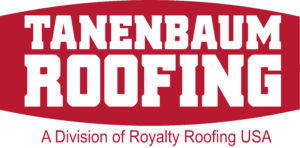Unlocking Energy Efficiency: The Science of Roof Colors and Materials
When it comes to creating an energy-efficient home, the often-overlooked hero is the roof. The color and material of your roof can significantly impact your energy consumption and, consequently, your monthly bills. Let’s delve into the world of energy-efficient roofing and explore the best roof colors and materials that can help you reduce your energy usage and environmental footprint.
Cool Roof Colors
Cool roofs are designed to reflect sunlight and absorb less heat compared to standard roofs. The color of your roof is a critical factor in determining its cooling capabilities and roofs in warmer climates benefit greatly from cool roofing materials. Here are some colors renowned for their cooling properties:
- White: White roofs are the champions of reflection. They excel at bouncing sunlight away and are a top choice for keeping your home cool in scorching climates.
- Light Gray: Light gray roofs strike a balance between reflectivity and aesthetics. They efficiently reflect sunlight while maintaining a neutral appearance.
- Beige or Light Pastels: Beige and light pastel shades offer a combination of style and sun-reflecting ability. They are effective at reducing heat absorption.
- Reflective Coatings: Some homeowners opt for reflective coatings, which can be applied to roofs of various colors. These coatings enhance a roof’s heat-reflecting properties and are an efficient solution.
Energy-Efficient Roofing Materials
Beyond color, the material you choose for your roof can affect energy efficiency.
- Metal Roofing: Metal roofs, constructed from materials like steel and aluminum, boast natural cooling properties. They reflect sunlight effectively, reducing heat absorption, and ultimately lower cooling costs. In addition, metal roofing is known for its durability and longevity.
- Tile Roofing: Tiles made from clay or concrete offer excellent thermal mass, regulating indoor temperatures effectively. They are suitable for both hot and cold climates, contributing to energy efficiency year-round.
- Slate Roofing: Slate roofs not only exhibit exceptional durability but also excel in energy efficiency. They naturally keep homes cooler and can endure for many decades, making them a sustainable choice.
- Cool Roof Shingles: Asphalt shingles have also evolved in the energy efficiency department. Some variants come with reflective coatings, making them a more energy-efficient alternative to traditional asphalt shingles. This is a budget-friendly option for those looking to enhance energy efficiency.
- Green Roofing: For those seeking an environmentally friendly solution, green roofs are a standout choice. These roofs, covered in vegetation, provide exceptional insulation and temperature regulation. They reduce heating and cooling demands while improving air quality.
Selecting the right roof color and material is a wise investment in your home’s energy efficiency and sustainability. Cool roof colors and energy-efficient roofing materials can help you trim your energy bills, reduce your carbon footprint, and create a more pleasant living environment.



